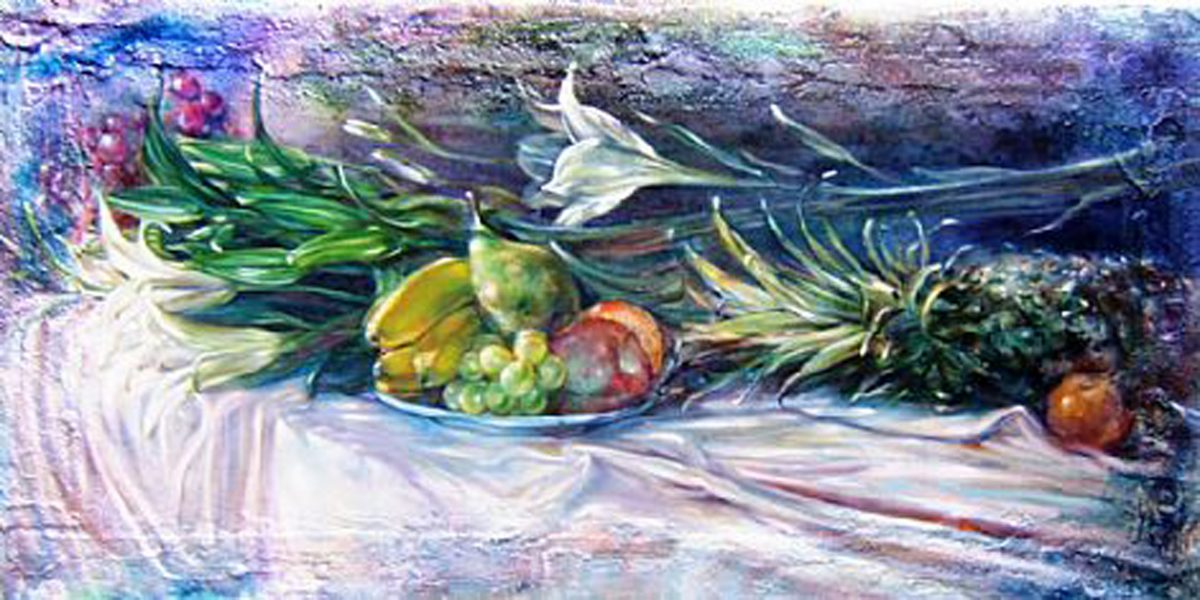“Life Fragments and Still Life”: An Exhibition by John Keating, Fulbright Alumnus
Date: Thursday, January 19, 2012 – Thursday, February 2, 2012
Location: Gormley’s Fine Art Studio, South Frederick Street, Dublin, Ireland
About the Artist (www.gormleys.ie)
John Keating‘s themes vary from life drawing, portraits or still life, noticeably fruit or flowers with poignant found objects.
His figurative work is an exploration of figures as units, the head, hands and feet are the most expressive parts of the body he says. Keating explains they carry with them a psychology, with the gestures of the body expressing vulnerability, happiness and grief. Hands are especially expressive for Keating as evident from his reoccurring use of hands in his work. He feels there is a universality of expression in the small detail of each hand – universal thinking can be expressed in a detail. The artist then advances on the subject and allows it to dissolve back into the texture and surface of the canvas.
When asked who his figures are, his reply is more complex; they are people that he knows/sees and asks to paint, combined with observation from life – drawing, sketching and photography which he refers to as “source material”. Keating says he “brings the image as far as I need to and then I let it recede back into the canvas, to offer the viewer a fragment.” Occasionally he paints family, or people that have interesting features or “something to say” as he describes it. Mainly he draws from elements of humanity, raw emotion and the extraordinary of people in life.
On discussing the objects Keating paints he says “objects carry a certain presence deeper than the thing itself.” In his work Keating aims to pull elements from the object and bade it in an atmosphere, like the walls of Pompeii; “I think of places, fragments, which evoke an idea of memory and transience. Objects have a resonance of a person, or the people who would have used or handled them.” When asked if he is a bit of a hoarder he laughs and admits, “probably a bit”, with many object collected from his travels.
Many of his composition contain ripe and vibrant fruit in his still life depictions. In discussion the symbolism of fruit arises, Keating notes the close relation of the human cycle to the observation of the ripening and decaying of fruit, an observation of transience, a sickle element of nature. There is also the basic attraction in the ripeness of fruit, which can be seen in the vivid colours and rich observation of the items in his canvas. Keating also discusses his preoccupation with working with objects coming into transition and capturing that fragment or transience, that moment of ripened fruit or blossoming flowers, lost in the atmosphere of light, with the poignant everyday object.
Keating takes his inspiration from many different places, he speaks of things coming through an osmosis, or a layering of life, “we read something, see something and it all adds to absorbing certain aspects of life which have a relevance to us.” Equally life feeds the artist visually as he develops his own direction. As an artist Keating‘s own direction has changed over the years as he admits to be being more absorbed in the process now, in the iconography. In recent works he develops the surface of the canvas, allowing the different elements of daily life to manifest itself in the work. “Every work is a new experiment, although you come to it with a certain developed knowledge, there is a huge element of intuition and exploration. Each work is a new beginning of a new experiment.”

